Discover Distillations | Science History Institute
Distillations | Science History Institute

Distillations | Science History Institute
Author: Science History Institute
Subscribed: 1,316Played: 25,104Subscribe
Share
© Creative Commons Attribution-ShareAlike
Description
Distillations is the Science History Institute's critically acclaimed flagship podcast. We take deep dives into stories that range from the serious to the eccentric, all to help listeners better understand the surprising science that is all around us. Hear about everything from the crisis in Alzheimer's research to New England's 19th-century vampire panic in compelling, sometimes-funny, documentary-style audio stories.
360 Episodes
Reverse
Alexis Pedrick joins Katie Hafner to bring you an episode from The Lost Women of Science Initiative, a non-profit educational organization dedicated to telling the forgotten or untold stories of remarkable female scientists and their groundbreaking work through history. The episode, which originally aired in October 2023, is about Flemmie Kittrell, the first Black woman to earn a PhD in Home Economics. In the early 1960s, Flemmie decided to see what would happen if you gave poor kids a boost early in life, in the form of a really great preschool. Every day for two years, parents would get free childcare, and their kids would get comprehensive care for body and mind—with plenty of nutritious food, fun activities, and hugs. What kind of difference would that make? And would it matter later on? Credits Host: Alexis Pedrick Executive Producer: Mariel Carr Producer: Rigoberto Hernandez Associate Producer: Sarah Kaplan Music by Blue Dot Sessions Resource List Flemmie Kittrell audio interviews, Black Women Oral History Project Interviews, 1976–1981, the Harvard Radcliffe Institute's Schlesinger Library Institute Kittrell, Flemmie, "The Negro Family as a Health Agency," The Journal of Negro Education, Vol. 18, No. 3, The Health Status and Health, 1949 Baure, Lauren, "Does Head Start Work?," The Brookings Institution, 2019 Horrocks, Allison, Good Will Ambassador with a Cookbook: Flemmie Kittrell and the International Politics of Home Economics, University of Connecticut, 2016 First report on Howard Preschool Experiment: Prelude to School: An Evaluation of an Inner-City Preschool Program, Children's Bureau (DREW), Washington, D.C. Social and Rehabilitation Service, 1968 Talbot, Margaret, " Did Home Economics Empower Women?," The New Yorker, 2021 Zigler, Edward, and Muenchow, Susan, Head Start: The Inside Story Of America's Most Successful Education Experiment, 1994.
In 2018 news broke that a Chinese scientist, He Jiankui, had used CRISPR to edit human embryos, and twin girls had been born as a result. The story set off an explosive bioethical controversy. As gene editing expert Kiran Musunuru put it, "He Jiankui's genetic misadventures were the biggest medical story of the century so far." Both scientists and the public had a lot of questions. What was the unmet medical need that justified the gene editing? Was the science ready for prime time? And, if it was, was He Jiankui the right scientist to do it? Seven years later these questions are far from resolved. Credits Host: Alexis Pedrick Executive Producer: Mariel Carr Producer: Rigoberto Hernandez Associate Producer: Sarah Kaplan Audio Engineer: Samia Bouzid Music by Blue Dot Sessions Resource List Baylis, Françoise. Altered Inheritance: CRISPR and the Ethics of Human Genome Editing. Cambridge, MA: Harvard University Press, 2019. CBS News. "Chinese Researcher Claims He Helped Make First Gene-Edited Babies." CBS News, November 26, 2018. CBS News. "Chinese Scientist Behind Gene-Edited Babies Sentenced to 3 Years in Prison." CBS News, December 30, 2019. Cobb, Matthew. As Gods: A Moral History of the Genetic Age. New York: Basic Books, 2022. Greely, Henry T. CRISPR People: The Science and Ethics of Editing Humans. Cambridge, MA: MIT Press, 2021. "He Jiankui presentation and Q&A, International Summit on Human Genome Editing." Youtube Video, November 26, 2018. Marchione, Marilynn. Associated Press. "Chinese researcher claims first gene-edited babies." AP News, November 26, 2018. "Meet Cathy Tie, Bride of 'China's Frankenstein.'" MIT Technology Review, May 23, 2025. Musunuru, Kiran. The CRISPR Generation: The Story of the World's First Gene-Edited Babies. BookBaby, 2019. NBC News. "Chinese Scientist Says He Helped Create First Gene-Edited Babies." NBC News, November 26, 2018. "World's first successful tailor-made gene therapy saves baby born with rare disorder." CBS Mornings. May 16, 2025.
The fears about genetic engineering were stoked when experiments took off in the 1970s. From lab leaks to disease epidemics to the ability to make "Frankenstein creations," many of those fears are still with us today. We talk to author Surekha Davies about her latest book, why she thinks of monsters as category breakers and why blurring boundaries can be so terrifying for us, but maybe doesn't have to be. Credits Host: Alexis Pedrick Executive Producer: Mariel Carr Producer: Rigoberto Hernandez Associate Producer: Sarah Kaplan Audio Engineer: Samia Bouzid Music by Blue Dot Sessions Resource List Davies, Surekha. Humans: A Monstrous History. University of California Press: 2025.
Our producer Rigoberto Hernandez spoke with Robin Marantz, the author of Pandora's Baby: How the First Test Tube Babies Sparked the Reproductive Revolution. She tells us about the history of IVF, from the first known artificial insemination by donor produced in Philadelphia in the 19th century to the scientific race in the 1960s and 1970s that resulted in the first so-called "test-tube baby." Credits Host: Alexis Pedrick Executive Producer: Mariel Carr Producer: Rigoberto Hernandez Associate Producer: Sarah Kaplan Audio Engineer: Samia Bouzid Music by Blue Dot Sessions Resource List Henig, Robin Marantz. Pandora's Baby: How the First Test Tube Babies Sparked the Reproductive Revolution. Cold Spring Harbor Laboratory Press, 2006.
When Rebekah and Evan Lockard's daughter, Naomi, was diagnosed with a devastating ultra-rare genetic disease, they didn't know where to turn. Then they found Terry Pirovolakis, an IT professional who had made a gene therapy for his son with the same disease. But the process of getting Naomi treated has been an uphill battle, full of financial and logistical obstacles. The Lockard's story flips the question we've been asking all season on its head. Instead of wondering, "if we could do something, should we," we're now asking, "if we can do something that helps patients, should we do it at any cost?" And this question isn't for scientists or researchers, it's for the rest of us. Credits Host: Alexis Pedrick Executive Producer: Mariel Carr Producer: Rigoberto Hernandez Associate Producer: Sarah Kaplan Audio Engineer: Samia Bouzid Music by Blue Dot Sessions Resource List Mast, Jason. "A dad built a gene therapy for his son. Can he save other kids, too?" STAT News. Elpida Therapeutics. "Battling SPG50 and changing the world." August 17, 2022. The Jackson Laboratory. Brent, Jonathan R. and Deng, Han-Xiang. "Paving a way to treat spastic paraplegia 50." "AAV gene therapy for hereditary spastic paraplegia type 50: a phase 1 trial in a single patient." June 28, 2004. "Colorado family pushes for more funding, awareness around rare neurological disorder." August 12, 2024. CBS News Colorado. Naomi's Corner.
Gene therapy is based on a simple-sounding, yet deceptively complicated premise: adding or replacing faulty genes to fix medical problems. A compelling idea that came out of breakthroughs in DNA research, the field grew lightning fast. But the death of teenager Jesse Gelsinger after a gene therapy clinical trial left the public and scientists questioning the field's promise. Why did researchers push ahead with clinical trials despite gene therapy still being in its infancy? What does the Jesse Gelsinger story tell us about the personal risk behind medical breakthroughs? Credits Host: Alexis Pedrick Executive Producer: Mariel Carr Producer: Rigoberto Hernandez Associate Producer: Sarah Kaplan Audio Engineer: Samia Bouzid Music by Blue Dot Sessions Resource List American Experience: The Boy in the Bubble. PBS. Begley, Sharon. "Out of Prison, the 'Father of Gene Therapy' Faces a Harsh Reality: a Tarnished Legacy and an Ankle Monitor." STAT News, July 23, 2018. Cobb, Matthew. As Gods: A Moral History of the Genetic Age. New York: Basic Books, 2022. "C‑SPAN: Paul Gelsinger." C‑SPAN. Gelsinger, Paul L. "Jesse's Intent." Circare. ABC Evening News. Vanderbilt Television News Archive, December 8, 1999. CBS Evening News. Vanderbilt Television News Archive, May 28, 1999. NBC Nightly News Broadcast. Vanderbilt Television News Archive, December 8, 1999. "Report and Recommendations of the Panel to Assess the NIH Investment in Research on Gene Therapy." Georgetown University Library. Rinde, Meir. "The Death of Jesse Gelsinger, 20 Years Later." Science History Institute, June 4, 2019. Stolberg, Sheryl Gay. "The Biotech Death of Jesse Gelsinger." New York Times Magazine, November 28, 1999. "Teen Dies Undergoing Experimental Gene Therapy." Washington Post, September 29, 1999. "The Glimmering Promise of Gene Therapy." MIT Technology Review, November 1, 2006. The NewsHour with Jim Lehrer, 1999-12-08. NewsHour Productions. American Archive of Public Broadcasting (GBH and the Library of Congress), Boston, MA and Washington, DC. Wilson, James . "Lessons learned from the gene therapy trial for ornithine transcarbamylase deficiency."
Producer Mariel Carr talks to historian of science and former Science History Institute fellow, Luis Campos, about his article "Strains of Andromeda: The Cosmic Potential Hazards of Genetic Engineering." He shares how Michael Crichton's first novel and the subsequent film influenced the conversation and controversy around recombinant DNA research in the 1970s. Credits Host: Alexis Pedrick Executive Producer: Mariel Carr Producer: Rigoberto Hernandez Associate Producer: Sarah Kaplan Audio Engineer: Samia Bouzid Music by Blue Dot Sessions Resource List The Andromeda Strain. IMDb. Campos, Luis A. "Strains of Andromeda: The Cosmic Potential Hazards of Genetic Engineering."
In 1976, Harvard University wanted to build a specialized lab for recombinant DNA research. But first, it had to get permission from the city of Cambridge. The resulting city council hearings drew TV stations and captured the attention of the whole country. At the center of the controversy? A wise-talking mayor, a young outspoken molecular biologist, and an important question: in scientific research, how much say should the public have? Credits Host: Alexis Pedrick Executive Producer: Mariel Carr Producer: Rigoberto Hernandez Associate Producer: Sarah Kaplan Audio Engineer: Samia Bouzid Resource List Cobb, Matthew. As Gods: A Moral History of the Genetic Age. New York: Basic Books, 2021. Krimsky, Sheldon. Genetic Alchemy: A Social History of the Recombinant DNA Controversy. Cambridge: The MIT Press, 1984. Rogers, Michael. "Biohazard." Nova: The Gene Engineers. Dailymotion. "Cambridge DNA Hearings, 1976." Massachusetts Institute of Technology, Oral History Program, oral history collection on the recombinant DNA controversy. "Cambridge RDNA hearings, volume 1, 1976." Massachusetts Institute of Technology, Oral History Program, oral history collection on the recombinant DNA controversy. "National Academy of Sciences. Forum. Washington, DC, 1977 March 7–9." Massachusetts Institute of Technology, Oral History Program, oral history collection on the recombinant DNA controversy. "The MacNeil/Lehrer Report: Genetic Engineering." American Archive of Public Broadcasting. From Controversy to Cure: Inside the Cambridge Biotech Boom. MIT Video Productions. "Pantechnicon; Dna, 1976." WGBH. The Andromeda Strain. IMDb. Jurassic Park. IMDb. CBS News – 04.06.1977 NBC News – 05.24.1977
Genetic engineering breakthroughs in the late 1960s and early 1970s came with a lot of promise—and peril too. Fears about what could happen with recombinant DNA experiments put scientists in the middle of a moral dilemma. Did they have a responsibility to consider how others might use their work? Or was their place simply to be on the lab bench? In this two-part episode, we'll share the story about the first time scientists stopped and considered the ramifications of their work, with a self-imposed moratorium. And we'll explore all the controversy that led to the historic pivotal meeting at the Asilomar Conference Grounds in 1975 to determine the future of genetic engineering. Credits Host: Alexis Pedrick Senior Producer: Mariel Carr Producer: Rigoberto Hernandez Associate Producer: Sarah Kaplan Audio Engineer: Jonathan Pfeffer Music by Blue Dot Sessions Resource List A Deep Conversation with Jon Beckwith: A History of Scientific and Social Activism. University of California Television. YouTube. Berg, Paul. "Paul Berg Letter." Wellcome Collection. Chemical Heritage Foundation: The Emergence of Biotechnology. Science History Institute. Cobb, Matthew. As Gods: A Moral History of the Genetic Age. New York: Basic Books, 2021. Cohen, Stanley N. Science, Biotechnology, and Recombinant DNA: A Personal History. UC Berkeley. DNA Learning Center. "Asilomar Meeting." Genetic Dreams, Genetic Nightmares. BBC. Fredrickson, Donald S. Asilomar and Recombinant DNA: The End of the Beginning. DNA: The Secret of Life. IMDb. Jurassic Park. IMDb. Late 1960s-Early 1970s Anti-War Marches. YouTube. "Letter from Maxine Singer and Dieter Söll to Philip Handler." Lear, John. Recombinant DNA: The Untold Story. Goodreads. Mukherjee, Siddhartha. The Gene: An Intimate History. Simon & Schuster. McElheny, Victor. Attempting the Impossible at Asilomar. McElheny, Victor. Gene Transplants Seen Helping Farmers and Doctors. The New York Times, May 20, 1974. Nova: The Gene Engineers. Dailymotion. Protein Synthesis: An Epic on the Cellular Level. YouTube. Rejection of Science Worries American Scientists. The New York Times, April 5, 1970. Rogers, Michael. The Pandora's Box Congress. Rolling Stone. The Gene: PBS. PBS Learning Media. "The MacNeil/Lehrer Report: Genetic Engineering." American Archive of Public Broadcasting.
Genetic engineering breakthroughs in the late 1960s and early 1970s came with a lot of promise—and peril too. Fears about what could happen with recombinant DNA experiments put scientists in the middle of a moral dilemma. Did they have a responsibility to consider how others might use their work? Or was their place simply to be on the lab bench? In this two-part episode, we'll share the story about the first time scientists stopped and considered the ramifications of their work, with a self-imposed moratorium. And we'll explore all the controversy that led to the historic pivotal meeting at the Asilomar Conference Grounds in 1975 to determine the future of genetic engineering. Credits Host: Alexis Pedrick Senior Producer: Mariel Carr Producer: Rigoberto Hernandez Associate Producer: Sarah Kaplan Audio Engineer: Jonathan Pfeffer Music by Blue Dot Sessions Resource List A Deep Conversation with Jon Beckwith: A History of Scientific and Social Activism. University of California Television. YouTube. Berg, Paul. "Paul Berg Letter." Wellcome Collection. Chemical Heritage Foundation: The Emergence of Biotechnology. Science History Institute. Cobb, Matthew. As Gods: A Moral History of the Genetic Age. New York: Basic Books, 2021. Cohen, Stanley N. Science, Biotechnology, and Recombinant DNA: A Personal History. UC Berkeley. DNA Learning Center. "Asilomar Meeting." Genetic Dreams, Genetic Nightmares. BBC. Fredrickson, Donald S. Asilomar and Recombinant DNA: The End of the Beginning. DNA: The Secret of Life. IMDb. Jurassic Park. IMDb. Late 1960s-Early 1970s Anti-War Marches. YouTube. "Letter from Maxine Singer and Dieter Söll to Philip Handler." Lear, John. Recombinant DNA: The Untold Story. Goodreads. Mukherjee, Siddhartha. The Gene: An Intimate History. Simon & Schuster. McElheny, Victor. Attempting the Impossible at Asilomar. McElheny, Victor. Gene Transplants Seen Helping Farmers and Doctors. The New York Times, May 20, 1974. Nova: The Gene Engineers. Dailymotion. Protein Synthesis: An Epic on the Cellular Level. YouTube. Rejection of Science Worries American Scientists. The New York Times, April 5, 1970. Rogers, Michael. The Pandora's Box Congress. Rolling Stone. The Gene: PBS. PBS Learning Media. "The MacNeil/Lehrer Report: Genetic Engineering." American Archive of Public Broadcasting.
Check out our new season, dropping weekly on Tuesdays, starting August 5th.
Feeding kids a healthy lunch every school day is a feat of science and logistics. Molded into shape by nutrition scientists who wanted to optimize children's health, the school lunch has endured war, economic depression, and even a global pandemic. Some might say it's all the stronger for it. So how did all these crises shape school lunch? And is there any room to give our rectangle pizzas and frozen chicken patties a little grace? Credits Host: Alexis Pedrick Executive Producer: Mariel Carr Producer: Rigoberto Hernandez Associate Producer: Sarah Kaplan Audio Engineer: Jonathan Pfeffer Music by Blue Dot Sessions. Resource List 1930s Farmer Talks About the Great Depression and Poverty. YouTube video. 1:54. Posted by Timeless Footage, March 10, 2020. ABC Evening News. May 14, 1969. Vanderbilt Television News Archive. CBS News. CBS Evening News. September 4, 1981. Vanderbilt Television News Archive. CBS News. September 25, 1981. Vanderbilt Television News Archive. C-SPAN. House Session, Part 1. Daily School Meals During Coronavirus Closures. YouTube video. 4:59. CBS Sacramento. Great Depression, Film Archives NYC. YouTube video. 6:46. Posted by Reel America, October 30, 2020. Hunger in America. CBS News. "Hunger in America: The 1968 CBS Documentary That Shocked America." Levine, Susan. School Lunch Politics: The Surprising History of America's Favorite Welfare Program. Princeton, NJ: Princeton University Press, 2008. Lunch Line. Directed by Michael Graziano and Ernie Park. Uji Films, 2010. Mitman, Greg. YouTube video. 2:44. Posted January 13, 2023. Mrs. Croft talks to parents about the need to provide hot lunch to students at a school in Pittsford, Vermont. Critical Past. NBC News. December 21, 1981. Vanderbilt Television News Archive. Nixon Addresses Hunger, 1969. YouTube video. 3:02. Posted by AP Archive, November 5, 2015. Poppendieck, Janet. Free for All: Fixing School Food in America. Berkeley: University of California Press, 2010. "Ronald Reagan on Big Government: 'Government is the Problem.'" YouTube video, 0:15. Ruis, Andrew R. Eating to Learn, Learning to Eat: The Origins of School Lunch in the United States. New Brunswick, NJ: Rutgers University Press, 2017. "The Twisted History of School Lunch, Part 1." Pressure Cooker. Podcast audio, 35:17. Hosted by Jane Black and Liz Dunn. Omny Studio, February 6, 2024.
ALS is a fatal neurological disease that kills motor neurons. Even though it was first described more than 150 years ago, there is no cure, and the few drugs available only dampen the symptoms or slow the progression by a few months. In recent years new drugs have emerged. However, there is one problem: the life expectancy is just two to five years after diagnosis. This timeline is incompatible with the FDA drug approval process, which takes years and even decades. This has created a tense situation for desperate patients who are demanding the FDA approve unproven drugs. What's the harm in giving desperate patients an imperfect drug? Credits Host: Alexis Pedrick Senior Producer: Mariel Carr Producer: Rigoberto Hernandez Associate Producer: Sarah Kaplan Audio Engineer: Jonathan Pfeffer "Color Theme" composed by Jonathan Pfeffer. Additional music by Blue Dot Sessions
In 1973 a bombshell study appeared in the premier scientific journal Science. It was called "On Being Sane in Insane Places." Its author, a Stanford psychology professor named David Rosenhan, claimed that by faking their way into psychiatric hospitals, he and eight other pseudo-patients had proven that psychiatrists were unable to diagnose mental illness accurately. Psychiatrists panicked, and, as a result, re-wrote what's known as "psychiatry's bible"—the Diagnostic and Statistical Manual of Mental Disorders, or DSM. The study and the subsequent overhaul of the DSM changed the field forever. So it was a surprise when, decades later, a journalist reopened Rosenhan's files and discovered that the study was full of inconsistencies and even blatant fraud. So should we throw out everything it revealed? Or can something based on a lie still contain any truths? Credits Host: Alexis Pedrick Senior Producer: Mariel Carr Producer: Rigoberto Hernandez Associate Producer: Sarah Kaplan Audio Engineer: Jonathan Pfeffer "Color Theme" composed by Jonathan Pfeffer. Additional music by Blue Dot Sessions
For more than 100 years, biologists who suggested that some cancers may be caused by viruses were the pariahs of genetics. However, they persevered and incrementally built their knowledge, leading to the discovery of retroviruses, the development of a test to diagnose HIV, and the creation of the HPV vaccine. Join us as we interview Gregory J. Morgan about his book Cancer Virus Hunters: A History of Tumor Virology. Credits Host: Alexis Pedrick Senior Producer: Mariel Carr Producer: Rigoberto Hernandez Associate Producer: Sarah Kaplan Audio Engineer: Jonathan Pfeffer "Color Theme" composed by Jonathan Pfeffer. Additional music by Blue Dot Sessions
In 1973 biochemist Bruce Ames created a simple test that showed if chemicals had the potential to cause cancer. The Ames test made him a hero of the emerging environmental movement. But then he completely changed course and said concerns about chemicals were overblown. So what happened? Did Ames change? Or did our understanding of what causes cancer change? Featured Oral History Bruce N. Ames, "Bruce N. Ames: The Marriage of Biochemistry and Genetics at Caltech, the NIH, UC Berkeley, and CHORI, 1954–2018" conducted by Paul Burnett in 2019 and 2020, Oral History Center, The Bancroft Library, University of California, Berkeley, 2021. Credits Host: Alexis Pedrick Senior Producer: Mariel Carr Producer: Rigoberto Hernandez Associate Producer: Sarah Kaplan Audio Engineer: Jonathan Pfeffer "Color Theme" composed by Jonathan Pfeffer. Additional music by Blue Dot Sessions
Ozempic and others in this family of drugs are nothing short of miraculous. Meant to treat Type 2 Diabetes, the drug exploded in popularity after researchers found that patients were reporting losing 15-21% of their body weight in clinical trials. There were some side effects, but none so severe that it raised concerns. Doctors began prescribing it to people who weren't diabetic but could benefit from weight loss, and now, our only problem seems to be getting enough of it for all the people who need it. It all seems magical, but is it too good to be true? Join us as we dive into the history of weight loss drugs, drug manufacturing regulations, and the role we think medicine should play in our lives. Credits Host: Alexis Pedrick Senior Producer: Mariel Carr Producer: Rigoberto Hernandez Associate Producer: Sarah Kaplan Audio Engineer: Jonathan Pfeffer "Color Theme" composed by Jonathan Pfeffer. Additional music by Blue Dot Sessions
The impact of cars on wildlife extends beyond roadkill, affecting species that never venture near roads. Car noise disrupts bird communication and behavior, and tire and brake dust from pollutes waterways with microplastics. In this wide-ranging interview, we talk to the author of Traffication: How Cars Destroy Nature and What We Can Do About It, Paul Donald about how he coined the term "traffication," the history of road ecology, and what we can do about the problem. Credits Host: Alexis Pedrick Senior Producer: Mariel Carr Producer: Rigoberto Hernandez Associate Producer: Sarah Kaplan Audio Engineer: Jonathan Pfeffer "Color Theme" composed by Jonathan Pfeffer. Additional music by Blue Dot Sessions
In 1856, Henry Perkin's attempt to synthesize quinine led to something very different: a vibrant purple dye. Perkin's mauve revolutionized the fashion industry when Queen Victoria wore a dress of the color to her daughter's wedding. And in an ironic twist, synthetic fabric dyes ultimately led to synthetic drugs, including the first antipsychotic. This drug, known by its trade name Thorazine, was a gamechanger. "Nobody thought there could be a drug that would treat schizophrenia effectively," says sociologist Andrew Scull, "and then suddenly there was." In this episode we explore the enduring relationship between dyes and drugs, and the role that mistakes and serendipity still play in drug development. Credits Host: Alexis Pedrick Executive Producer: Mariel Carr Producer: Rigoberto Hernandez Associate Producer: Sarah Kaplan Audio Engineer: Jonathan Pfeffer "Color Theme" composed by Jonathan Pfeffer. Additional music by Blue Dot Sessions.
The color pink has long been in vogue, and when Barbie hit theaters in 2023, its appeal only increased. But its popularity dates back much further than the Mattel doll. In this bonus episode, Dr. Dominique Grisard, a gender studies professor at the University of Basel, discusses the hue and its ties to femininity, class, and Whiteness, as well as how pink has been used to subdue men in detention centers. This episode was inspired by our museum exhibition, BOLD: Color from Test Tube to Textile, on view through August 3, 2024. Credits Host: Alexis Pedrick Senior Producer: Mariel Carr Producer: Rigoberto Hernandez Associate Producer: Sarah Kaplan Audio Engineer: Jonathan Pfeffer "Color Theme" composed by Jonathan Pfeffer. Additional music by Blue Dot Sessions






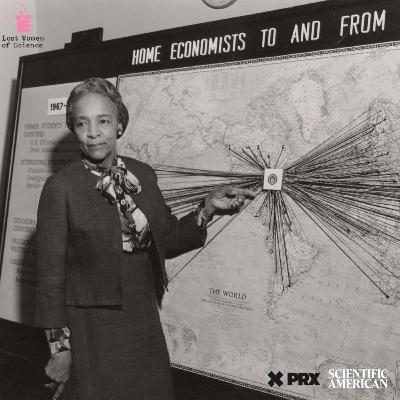
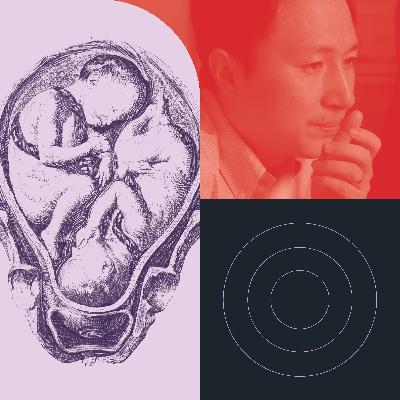
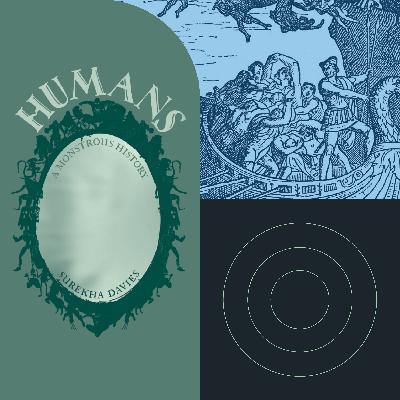
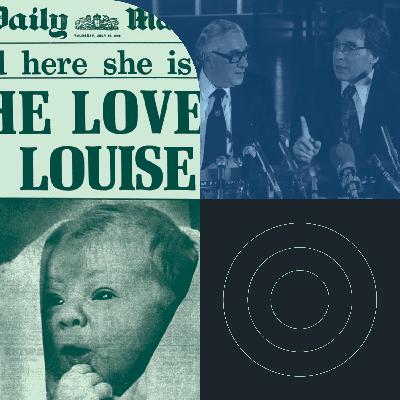
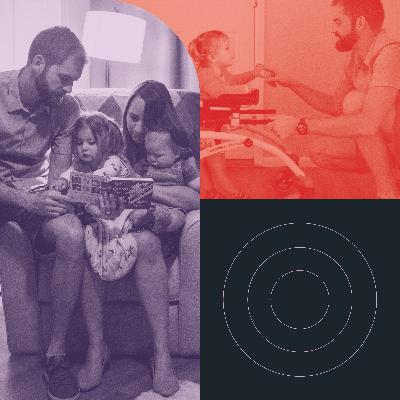
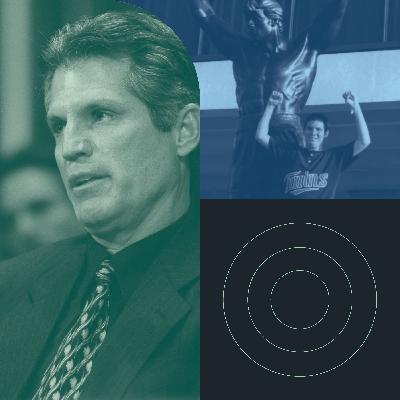

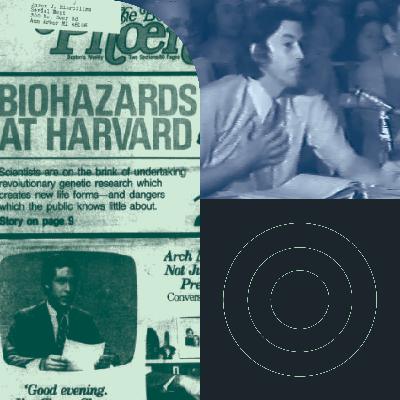
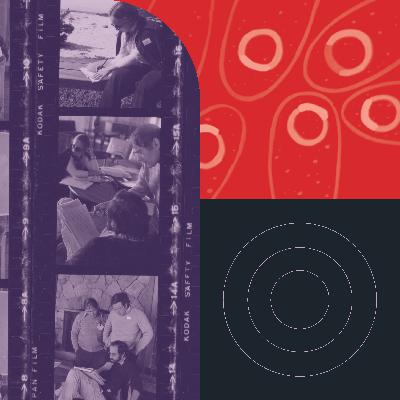












👍Excellent show!
This 3 part series has been incredible. The music, the breakdown and the relevance to Philadelphia being the city Distillations originates from..I think it is a stand out of this podcast. More like this would be greatly appreciated! such an important and educational series.